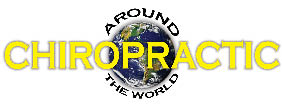
BUFFALO GROVE, IL, June 19, 2013 In 1995 chiropractor Daniel Kamen conducted his first of four hundred animal chiropractic technique seminars that was not just for licensed chiropractors and veterinarians, but also for regular horse and dog owners. Each seminar quickly sold out. Kamen, an animal chiropractic pioneer and author of three bestselling books on animal chiropractic technique, The Well Adjusted Dog, The Well Adjusted Horse, and The Well Adjusted Cat, was swiftly served with cease and desist letters from several states claiming he violated their veterinary laws by teaching non-professionals to manipulate Spot, Seabiscuit, and Fluffy.
“Soon after I conducted my first few seminars I heard from a lot of states warning me to stay out. Minnesota, Oklahoma, Arkansas, Georgia, Washington, Ohio, Louisiana, and Nevada all sent me cease and desist letters. Nevada! They allow gambling and prostitution but they’ll lock you up for cracking a horse’s tuchus.”
Nevada even threatened Kamen with legal action if he didn’t remove seminar announcements from his website, www.animalchiropractic.com.
“It’s all about money,” Kamen said. “Dog owners won’t spend five grand for hip dysplasia surgery when a simple, almost free chiropractic technique can help prevent its onset.”
Aside from the hip dysplasia technique, dog owners paid close attention when Kamen demonstrated the bladder control move. “It just takes four minutes a day,” Kamen said. “And no more soiled carpets.”
By far, the most popular chiropractic technique among Thoroughbred trainers and barrel racers is the “Pre-Race Adjusting Sequence,” which, according to Kamen, “increases efficiency and can shave fractions off the time.”
Practitioners from as far away as Hong Kong, Australia, South Africa, and England flew in to learn these techniques. “My seminars attracted people from all over the world,” said Kamen, 57, who is mostly retired and now conducts only one seminar a year. “A Saudi prince once flew his personal chiropractor to my Philadelphia seminar so he could adjust his prized Arabians.”
State laws regulating the practice of animal chiropractic haven’t changed much in 18 years. Even though there is a national veterinary chiropractic association certifying licensed practitioners, there are still less than two hundred full time professional animal chiropractors nationwide. Additionally, most veterinary boards have shut out licensed human chiropractors who are also certified in animal chiropractic. It’s no wonder horse and dog owners who want their animals adjusted have to fend for themselves.
“That’s why my seminars thrived,” Kamen said. “Horse and dog owners were just as fed up with the system as I was and were forced to learn how to adjust their own animals who suffered from neck, back, and leg pain. Their frustration in searching for a trained professional fueled my business. The states who made it illegal for licensed chiropractors to adjust animals were really doing me a favor. They created a lay market for me for which I am eternally grateful. My only problem now is finding the appropriate thank you card at Walgreens.”
